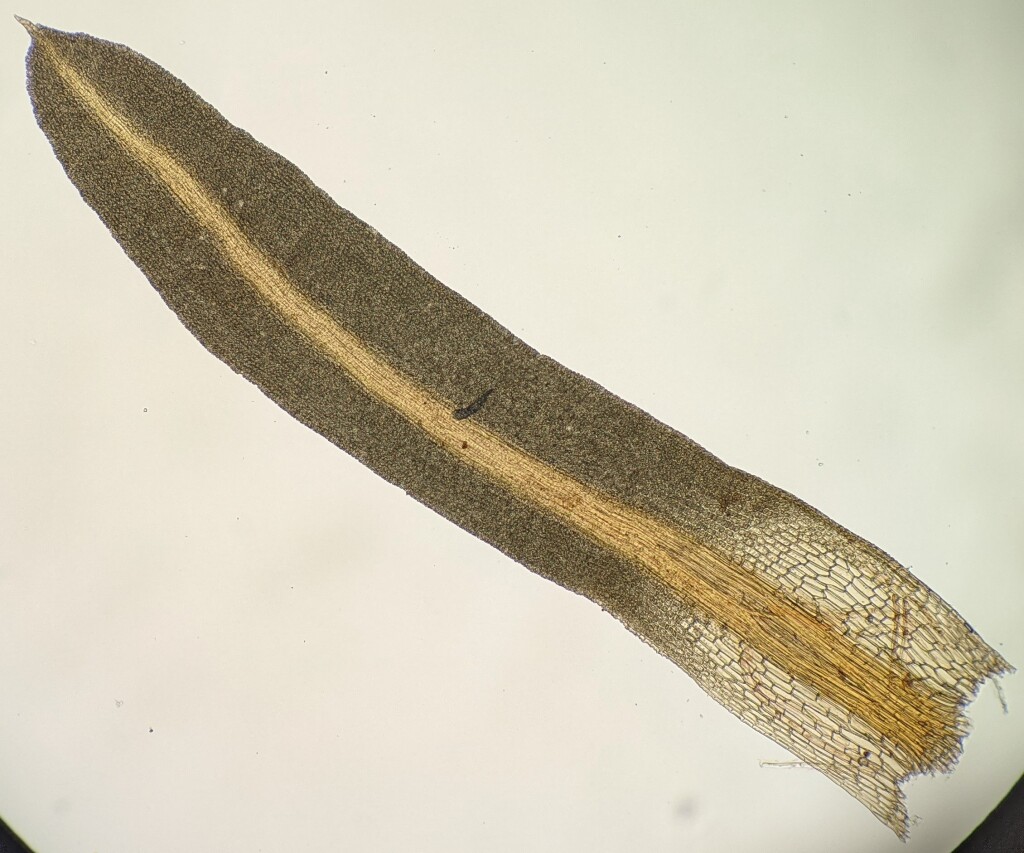Bryoerythrophyllum
Dioicous or rarely synoicous (not in Victoria), paroicous (not in Victoria), rhizautoicous (not in Victoria) or polygamous (not in Victoria). Asexual reproduction by masses of unicellular gemmae in leaf axils (not in Victoria) or by rhizoidal tubers (not in Victoria). Loose tufts or turves on soil or rocks (not in Victoria). Stem simple or occasionally branching, with scattered rhizoids; central strand present; sclerodermis usually present; hyalodermis usually absent. Leaves ovate (not in Victoria), elliptic (not in Victoria) or lanceolate to lingulate, erect- to wide-spreading when moist, appressed, flexuose or sometimes twisted around stem (not in Victoria) when dry; apex rounded-obtuse or acute, sometimes hyaline and reflexed; costa subpercurrent, percurrent (not in Victoria) or short-excurrent (not in Victoria), with quadrate adaxial superficial cells, with a differentiated adaxial epidermis, with an adaxial stereid band, with one or more hydroid strands, with an abaxial stereid band, with or without a differentiated abaxial epidermis, with elongate abaxial superficial cells; margins entire or denticulate near apex, recurved or plane throughout, sometimes with a border of 3–4 rows of thickened cells (not in Victoria); laminal cells in apical half subquadrate to short-rectangular, pluripapillose, with red to orange-red KOH reaction; basal laminal cells differentiated equidistantly from base from margin to costa (not in Victoria) or extending higher near costa, rectangular, smooth. Acrocarpous. Capsule erect or inclined, straight or curved, ellipsoid or cylindric, exserted, operculate, with an annulus. Calyptra cucullate. Operculum short-conic to short-rostrate. Peristome absent (not in Victoria), rudimentary (not in Victoria) or of 16 (not in Victoria) or 32 erect or twisted (not in Victoria) filaments.
Around 34 species throughout temperate to polar regions and at high altitude in tropical regions; one species in Victoria.
 Spinning
Spinning

